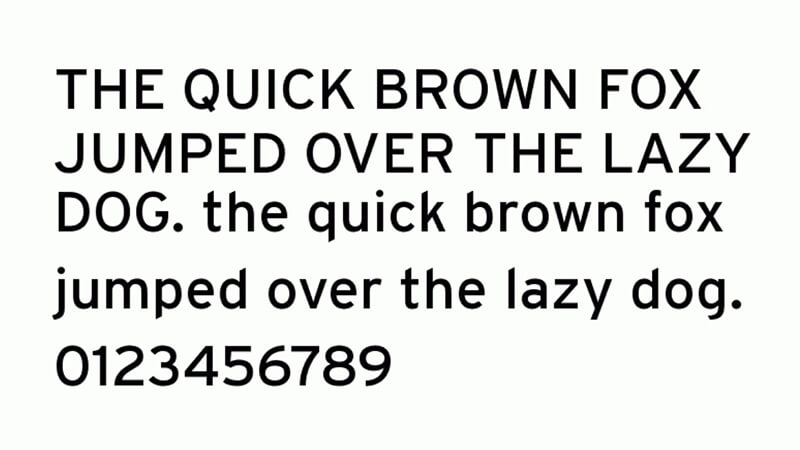

Series "A" has been officially discontinued in the United States due to poor legibility at high speeds, though it continues to be specified for certain signs in New Zealand.
Interstate font download manual#
The lowercase letters, paired with Series E Modified, later became the basis of a national standard for mixed-case legend on freeway guide signs with the 1958 publication of the American Association of State Highway and Transportation Officials (AASHTO) signing and marking manual for Interstate Highways. Between 19, as part of a research program into freeway signing carried out by the California Department of Transportation (Caltrans), Series E Modified was developed from Series E by thickening the stroke width to accommodate button reflectors for ground-mounted signs, while a lowercase alphabet was developed to allow mixed-case legend (consisting initially of Series D and lowercase letters) to be used on externally illuminated overhead signs.

Draft versions of these typefaces were used in 1942 for signs on the Pentagon road network. The 2000 specifications differ from earlier versions in the shapes of a few letters and in the inclusion of lowercase letters for all alphabet series.įHWA Series A through F were developed by the Public Roads Administration (which later became FHWA) during World War II. Changes to the specifications were published in 1966, 1977, and 2000. The typefaces are officially defined by the FHWA's Standard Alphabets for Traffic-Control Devices, originally published in 1948 (reprinted 1952). The typeface originally included only uppercase letters, with the exception of "E(M)", which was used on large expressway and freeway guide signs. The typeface consists of six fonts: "A" (the narrowest), "B", "C", "D", "E", "E(M)" (a modified version of "E" with wider strokes), and "F" (the widest). However, on signage the official FHWA Series punctuation is based on a circular shape. Computer typeface versions known as Highway Gothic or Interstate (a separate typeface), which are for sale to the general public, include punctuation marks based on a rectangular shape. The typefaces were developed to maximize legibility at a distance and at high speed. Variants, minor and major (but not the exact US typeface) are used in countries like Turkey, Mexico, Australia (AS1744 fonts), Spain, the Netherlands, Brazil, New Zealand, Macau (written in Portuguese), and some signs in countries like India and Saudi Arabia, when written in English. Highway Gothic (formally known as the FHWA Series fonts or the Standard Alphabets for Highway Signs) is a sans-serif typeface developed by the United States Federal Highway Administration (FHWA) and used for road signage in the Americas, including the U.S., Canada, and Latin American countries, as well as in Asian countries influenced by American signage practices, including the Philippines, China, Taiwan, Malaysia, Indonesia and Thailand.


 0 kommentar(er)
0 kommentar(er)
